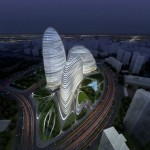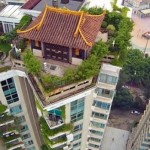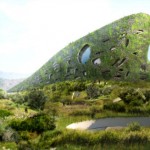[ By WebUrbanist in Architecture & Public & Institutional. ]

After years of both importing famous designers and copying strange structures from abroad, Xi Jinping, the leader of China’s Communist Party has declared an end to offbeat construction projects going forward. Translated from a two-hour speech on the subject, he was recently quoted as saying: “No more weird architecture.” As yet, it remains unclear whether this is a statement of official policy direction or a tacit warning to developers to play it safe stylistically and work within more conventional cultural styles and typologies.

Iconic buildings in the country have been coming under attack for quite some time, but the phallic look of the 500-foot headquarters of the Chinese state newspaper, the People’s Daily, sparked particular outrage, likely leading to his more vocal objection. Crasser comparisons aside, various spheres, donuts and other shaped deemed odd by the party leader have also been critiqued both domestically and on the international social web.


Other designs prompting problems for the government in the press include the CCTV headquarters in Beijing by Rem Koolhaas. Still, the theme of genitalia shape comparisons in paritcular, as in the case of the bridges (above) in Chongqing, have caused state media to start censoring search results related to some projects. They are also not fans of advertising their surreal replicas or ghost cities, also unusual byproducts of the recent construction boom. There may be a larger political message at work as well – China’s relatively recent new leadership has been cracking down on decadence and corruption in various other forms.


Speaking recently, Xi maintained that “Fine art works should be like sunshine from the blue sky and the breeze in spring that will inspire minds, warm hearts, cultivate taste and clean up undesirable work styles.” Sadly for some, his response comes at a time when architecture in China is also drawing a great deal of positive attention, some copycat scandals aside.






[ By WebUrbanist in Architecture & Public & Institutional. ]
[ WebUrbanist | Archives | Galleries | Privacy | TOS ]

WebUrbanist


















You must be logged in to post a comment.